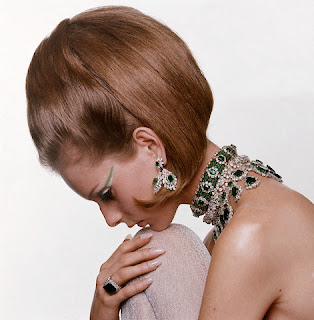Bonwit Teller
Bonwit Teller was a high quality ladies apparel store, founded by Paul J. Bonwit(1862-1939).
In the 1920s and 1930s they carried French models, including duplicates of Lanvin, Patou, Vionnet, and Maggy Rouff, custom mades, and American-made garments including designs by Nettie Rosenstein. They were noted for the quality of their merchandise and the salaries they paid.
Henri Bendel
Henri Bendel (1868-1936) started as a milliner. He opened his New York City hat shop in 1896. By the 1910s, he was producing high quality custom made clothing, and he also was a major importer of French designs. He was one of the first Americans to buy at Chanel, and he imported and copied many of the French couturiers.
In 1931, the store opened a ready-to-wear (pret-a-porter) department, although they continued to be known for their top-of-the-line custom work. They continued to import French fashion through the Great Depression, but were forced to stop the practice with the outbreak of WWII. By this time, Henri Bendel had died, but his namesake store remained a major force in the New York fashion world. In 1946, the store was one of the first to view and buy from the new French collections.
Malcom Starr
Malcolm Starr made a popular line of evening dresses from the early 1960s through the 1970s. A Malcolm Starr dress was commonly a sculptural and simple shift dress which was elaborately beaded and sequined. These are always striking numbers!
Rappi
Rappi was actually a talented Viennese-born woman named Syd Rappaport, who made a name for herself with glamourous formal wear which was much beloved by debutantes with a particular eye for style. Although there was no business connection with Will Steinman, they were certainly among that small group of formalwear firms which controlled the higher-end of the business (other firms in that august group included Lee Claire, Ceil Chapman, Camco Evening Fashions, Malcolm Starr, and Modern Couture).
Lilli Diamond
Lilli Diamond, a Californian designer, started her dress-making business in 1951. She was based in Los Angeles.
Eisenberg
Eisenberg started in 1914 as a wholesaler of ladies’ clothing, but is known today solely as a manufacturer of high quality rhinestone jewelry.
Eisenberg often included costume jewelry on their dresses. As many of these pieces were stolen off the racks, Eisenberg realized there was a market, and launched its famous jewelry line in the 1930s.
By the 1940s, the line was carried in most American cities. Eisenberg continued to use the narrow 1940s line and typical 1940s draping once the New Look arrived. Eisenburg stopped making clothing in 1958. The jewelry continues to be made today. Various marks include Eisenberg Original and Eisenberg Ice.
Dior
Dior
Christian Dior (1905 – 1958) was one of the most influential designers of the 20th century. From 1941-1946, Dior worked at Lucien Lelong. While there he attracted the attention of textile maker Marcel Boussac, who became Dior’s financial backer.
In the spring of 1947 Dior showed his first major collection, the “Corolle” line, which came to be known as the “New Look”. The “New Look” was made up of long, full skirts and a nipped-in waist that called for the use of a corset. Dior continued to be a major force in the fashion world in the 1950s, with a new silhouette each season, including the Princess line of 1951, the “H” line of 1954, and the “A” and “Y” lines of 1955.
Hattie Carnegie
Hattie Carnegie began designing as a milliner to huge success. In 1919 Hattie Carnegie, Inc. was born. This was also the year of her first buying trip to Paris. She bought French Couture dresses to take back to New York to both sell, and to use to make adaptations.
Until 1928, all the dresses at Hattie Carnegie were made to order, but in that year she started her first ready-to-wear line with Norman Norell as the designer. By this time, Hattie’s business had grown to be the size of a small department store.
She also began selling her ready-to-wear dresses, hats and accessories in stores around the country in the late 1930s. Her clothes were particularly popular in California, and many Hollywood stars were known to wear Carnegie’s clothes. This helped spread her reputation and helped establish her as a taste-maker across the country.
Hattie Carnegie is very often associated with elegance and high fashion, and even her ready-to-wear and more casual clothing always had a touch of the elegant. Carnegie’s fashion philosophy is often summed up as the woman should wear the clothes, not the clothes wear the woman.
Suzy Perette



Suzy Perette was not an actual person, but the name of a dress manufacturing company that made affordable versions of Parisian designs in the 1950s. The Suzy Perette silhouette of cinched waist and full skirt were extremely popular and a quality interpretation of Dior’s famous “New Look.”
Images and label resources courtesy of:
























































